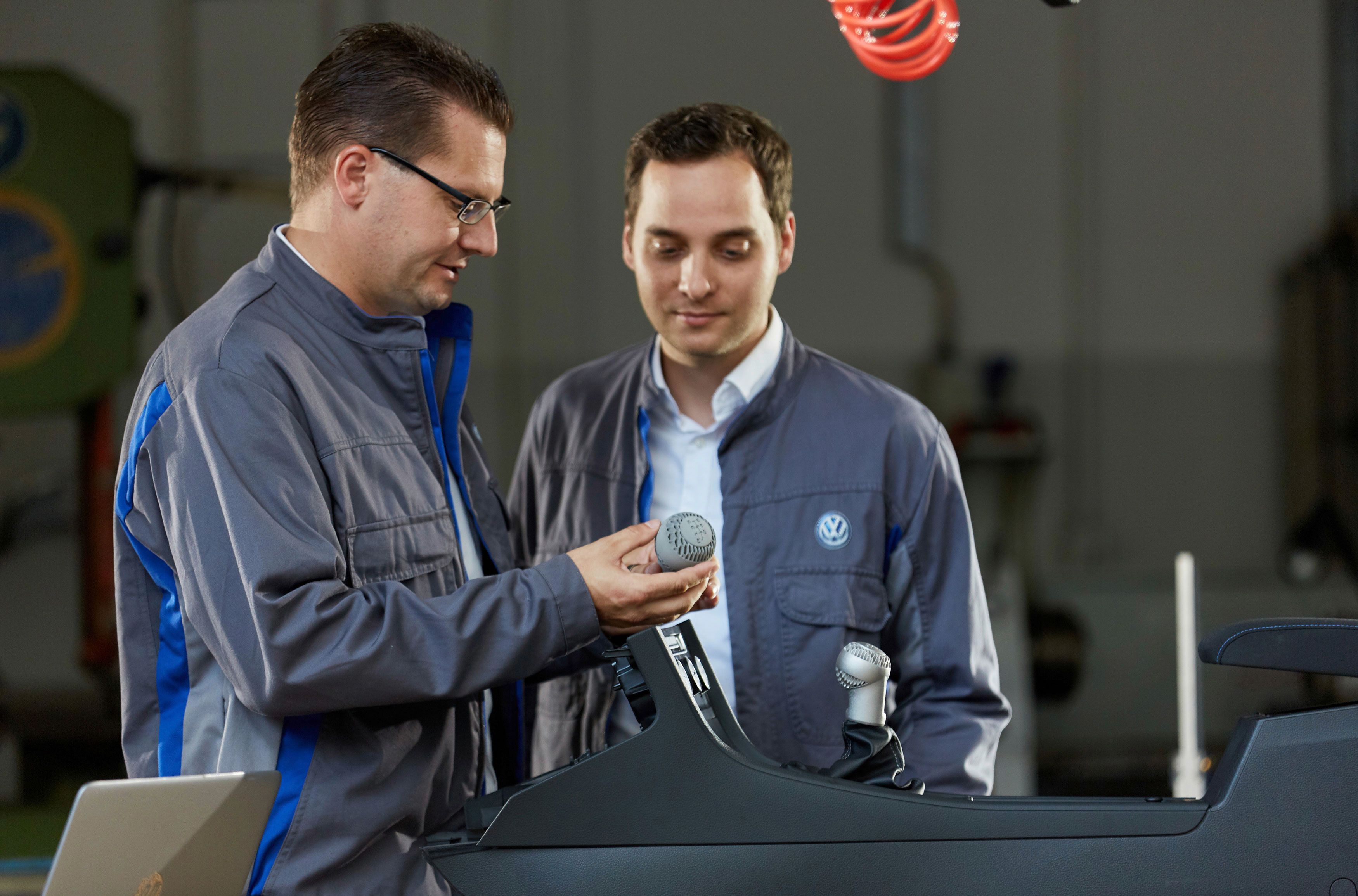Additive manufacturing, more commonly known as 3D printing, is usually utilized for the rapid production of prototypes and specialty parts. Now, however, Volkswagen claims a breakthrough development has readied this cutting-edge technology for mass production, opening up a slew of customer customization opportunities.
Continue reading for the full story.
The Full Story
This latest bit of news comes courtesy of a recent press release from Volkswagen that describes the automaker’s latest partnership with printing giant HP and component manufacturer GKN Powder Metallurgy. The three companies collaborated to develop an improved 3D printing process, which was recently put on display at the International Manufacturing Technology Show in Chicago.
“Automotive production is facing major challenges,” said Volkswagen’s Head of Technology Planning and Development, Dr. Martin Goede. “Our customers are increasingly expecting more personalization options. At the same time, complexity is increasing with the number of new models. That’s why we are relying on state-of-the-art technologies to ensure a smooth and fast production. 3D printing plays a particularly important role in manufacturing of individual parts.”
One of the draws of 3D printing as compared to traditional manufacturing techniques is customization. If you have the proper computer-generated design, the printer will spit out a part quickly and exactly as intended, all without the need for any specialty tools or machinery. VW’s technique produces the parts layer by layer using a powder and a binder, after which the part is “baked” into its final metallic form.
“A complete vehicle will probably not be manufactured by a 3D printer any time soon, but the number and size of parts from the 3D printer will increase significantly,” Dr. Goede explains. “Our goal is to integrate printed structural parts into the next generation of vehicles as quickly as possible. In the long term, we expect a continuous increase in unit numbers, part sizes and technical requirements - right up to soccer-size parts of over 100,000 units per year.”
Extrapolated over the very long term, we’re imagining highly customizable fully-electric autonomous vehicles printed out at a very rapid pace, with customers choosing from a wide variety of options, and even designing their own parts and aesthetic enhancements through an online customization tool.
What would you want to print for yourself?
Further Reading
Read more Volkswagen news.
Read more technology news.

